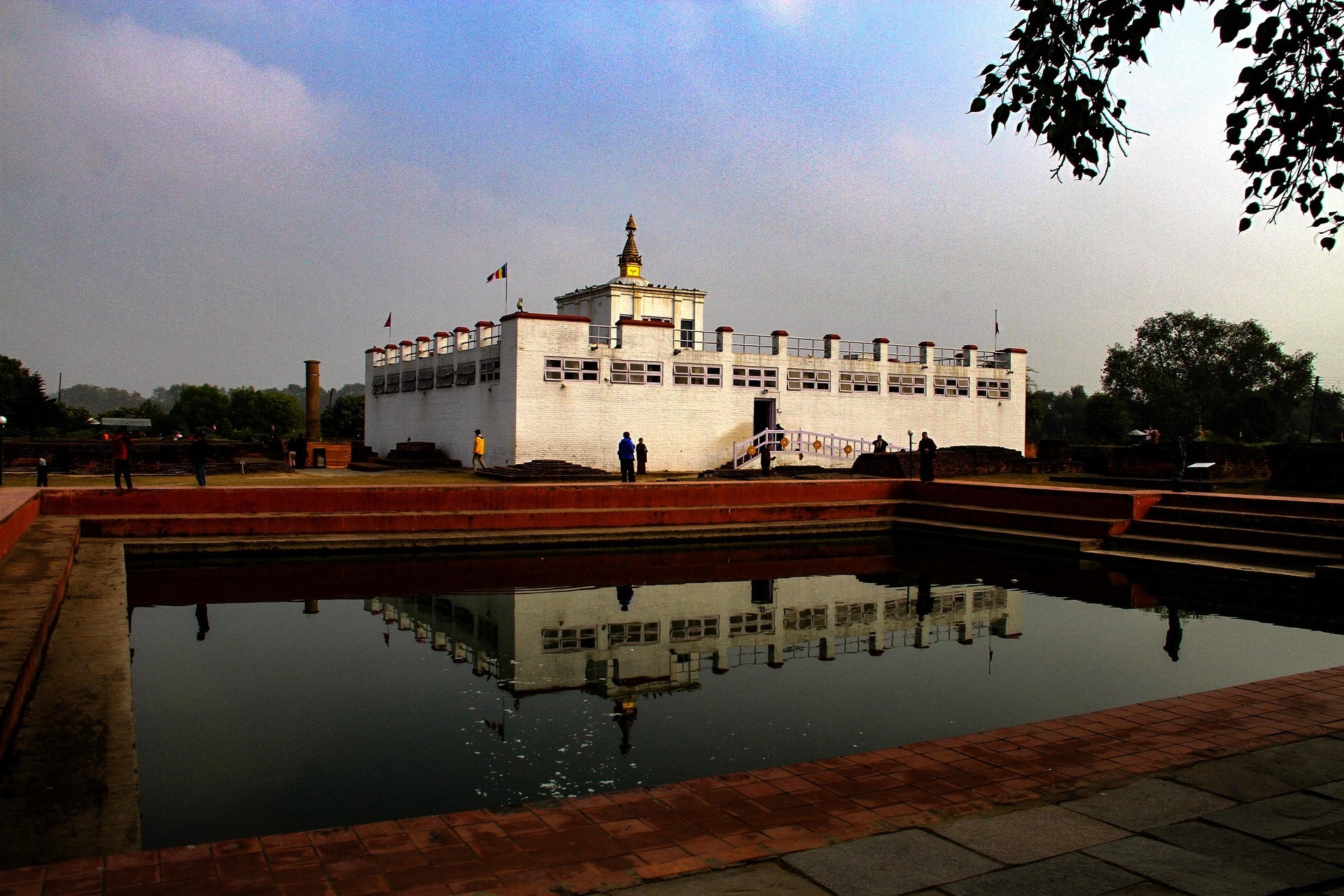Lumbini – The Peaceful Soul of Nepal

A Brief History of Lumbini: Birthplace of a Legend
You probably already know that Lumbini is the birthplace of Siddhartha Gautama — the Buddha. But here’s what you might not know:
-
Birthplace, Not Just a Symbol: This isn’t just a spiritual metaphor — this is the actual site where Queen Maya Devi gave birth under a sal tree around 623 BCE.
-
UNESCO World Heritage Site: It was designated in 1997, but archaeological digs continue to reveal even older Buddhist structures beneath the surface.
-
Ashoka’s Pillar: The Indian Emperor Ashoka visited Lumbini in 249 BCE and erected a pillar marking the exact spot of Buddha’s birth — and it still stands today.
-
The Peace Project: Lumbini isn’t just historical — it’s modern too. Countries from around the world have built stunning monasteries here as part of the Lumbini Master Plan, turning the city into a global village of spirituality.
Why Backpackers Love Lumbini
Backpackers (like us!) are drawn to Lumbini not for its nightlife or parties, but for something more real and rare:
-
Spiritual Energy: Whether you’re religious or not, there’s a peace here that hits different. Sunrise meditations, chanting monks, stillness — you’ll feel it.
-
Super Affordable: You can eat well, sleep comfortably, and explore on a tight budget. Perfect for long-term travelers.
-
No Tourist Hassle: Unlike Kathmandu or Pokhara, nobody's hustling you for treks or overpriced souvenirs. It’s calm, local, and honest.
-
Community Vibes: You’ll find fellow backpackers, pilgrims, yoga travelers, and soul searchers from all over the world. Conversations here go deep.
-
Slow Travel Friendly: Lumbini encourages you to pause, read a book, reflect, or just exist.
Must-Visit Places in Lumbini
You don’t need to rush here. Just wander and let the peace soak in. But don’t miss:
🕊️ Maya Devi Temple
The heart of it all. Inside, you’ll see the exact spot of Buddha’s birth marked by a stone, and ancient ruins surround it.
🏛️ Ashoka Pillar
This stone pillar is one of the most authentic Buddhist relics in the world. Snap a photo, but also take a moment to absorb the weight of 2,000+ years of history.
🧘 Lumbini Monastic Zone
This is my favorite area — a huge park-like zone filled with monasteries from countries like Thailand, Germany, China, and Korea. Each is an architectural and spiritual wonder.
🌅 World Peace Pagoda
Just outside the main compound, this striking white stupa gives you serious zen vibes, especially during sunset.
🍛 Local Eateries in Lumbini Bazaar
Try Nepali thali, sel roti, or a warm plate of dal bhat from a roadside stall. Authentic, cheap, and always filling.
Hidden Gems and Offbeat Experiences
Here’s where Lumbini gets extra magical for the curious wanderer:
🚴 Bike Through the Farmlands
Rent a bike for under NPR 300 and explore nearby villages. You’ll pass rice paddies, ox carts, and waving kids yelling “hello!”
📿 Meditation at Dhamma Janani Vipassana Center
They offer free (donation-based) meditation courses ranging from a day to 10 days. Life-changing stuff.
🌿 Kapilvastu (Tilaurakot) Ruins
About 27 km from Lumbini lies the ancient capital of the Shakya kingdom, where Buddha spent his early years. Quiet, raw, and often empty of tourists.
🧑🎨 Talk to the Monastery Artists
Monks and volunteers often paint murals or create mandalas. Ask politely, and they’ll gladly show you around.
Unique Experiences You Must Try
-
Join a group chanting session in any monastery during evening hours. No one cares if you’re off-tune — it’s the energy that matters.
-
Try local Terai-style snacks like “ghugni” (spiced peas) and “jilabi” (sweet fried coils).
-
Sunset walk to the Peace Pagoda through the crane sanctuary. Birds, silence, golden skies — all in one walk.
-
Volunteer for a day at a local school or community kitchen — many places welcome foreigners who want to give back.
Travel Tips for Backpackers
🚍 Getting There & Around
-
From Kathmandu: Buses (day or night) take 9–12 hours (NPR 1,200–2,000).
-
From Pokhara: 6–8 hours by bus.
-
Get around: Rent a bicycle or walk. Tuk-tuks available but bargain hard.
💸 Budget Tips
-
Street food and local dhabas offer meals for under NPR 150.
-
Guesthouses or hostels range from NPR 500–1,200/night.
-
Carry cash — ATMs aren’t always reliable.
🛌 Where to Stay
-
Bodhi Tree Guesthouse – Calm garden vibes.
-
Hotel Ananda Inn – Budget-friendly, comfy beds.
-
Lumbini Buddha Garden Resort – Nature + budget balance.
-
Check Hostelworld or Booking for more backpacker-style stays.
📱 Handy Apps
-
Maps.me – Offline maps that work perfectly in Lumbini.
-
Pathao – For rides in nearby cities.
-
Google Translate – Super handy for Terai dialects.
🧍 Etiquette to Know
-
Remove shoes at temples.
-
Dress modestly (shoulders and knees covered).
-
Be respectful of monks — avoid touching or pointing at them.
Best Time to Visit Lumbini
🌸 Spring (March–May)
Perfect weather for biking and exploring. Flowers bloom, temperatures are pleasant, and skies are clear.
🌧️ Monsoon (June–August)
Lush greenery everywhere, fewer tourists, but roads can be muddy. Bring waterproof gear.
🍁 Autumn (Sept–Nov)
Ideal weather and great lighting for photos. Festivals like Dashain and Tihar may overlap — added bonus.
❄️ Winter (Dec–Feb)
Cool mornings and sunny afternoons. Light jacket enough. Budget season, and peaceful as ever.
Final Thoughts
Lumbini isn’t a “bucket list” city full of adrenaline and selfies — it’s the kind of place that changes you quietly. It’s about slowing down, listening to the birds, watching a monk sweep temple steps, and realizing that peace isn’t just a place — it’s a way of traveling.
So if you're tired of the rush, or just want a city that gives more than it takes — pack your lightest bag and come to Lumbini.
